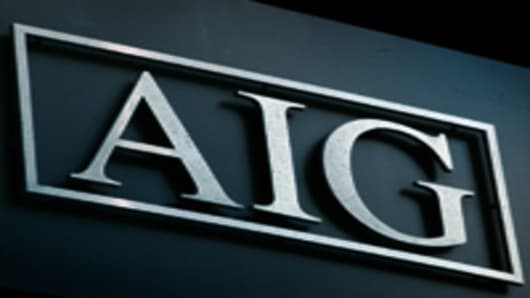For months, the Federal Reserve has insisted it has an exit strategy in place and has all the tools necessary for reversing the extraordinary monetary policy put in place during the financial crisis.
But now, faced with a formal offer to exit at a profit from one of the thorniest crisis-era holdings on its balance sheet, the Fed has remained silent and seemingly without a strategy.
AIG has come forward and offered $15.7 billionfor the residential mortgage-backed securities in the Maiden Lane II portfolio. These assets were taken by the Fed in the darkest days of the AIG bailout to secure a $22 billion loan that was part of the broader bailout.
The assets, mostly subprime residential mortgage-backed securities, have paid off and kicked off interest income while the loan has been paid down to the point where just about $14 billion is outstanding. So the $15.7 billion offer from AIG would mean the Fed would clear about $1.5 billion in profit on the assets.
The Fed could be excused if the offer had only just been made. But, in fact, the idea of AIG taking back these assets has been out there, in one form or another, since at least September. AIG has been busy raising money for what would be one of the biggest RMBS transactions since the financial crisis.
And yet, the Fed acts like it’s the first time it’s heard of the offer.
AIG CEO Robert Benmosche, in an interview on Squawk Box this morning, said he had still not heard from the Fedon its 10-day-old formal public offer to buy the Maiden Lane II portfolio. AIG had also not heard from the Fed on its behind-the-scenes offer to buy the assets in December.
Both the NY Fed and the Board of Governors in Washington declined numerous interview requests from CNBC to explain its thinking behind the AIG assets.
Fed watchers said they thought it made sense for the Fed to get these non-conventional assets off its book at the earliest opportunity. One source said he found Fed ownership of AIG subprime so troubling that he believed the central bank should unload them at almost any price, let alone at a profit.
Lou Crandall of Wrightson ICAP, said: “If I were the Fed, I would cash out and close the books.” He added that he would be happy to hear anything from the Fed explaining itself and, in an email, provided reasons that he thought could explain the Fed’s actions. He added that he barely believed his own reasons.
First, he said, the Fed may see it as premature to sell assets from a monetary policy stance. But then Crandall added, “I cannot imagine they think a transaction of this size would have macro implications.”
Second, he thought the Fed might think it will make more money by holding the assets. But then Crandall added that he’s pretty sure (as am I) that the Fed thinks such considerations shouldn't motivate a decision.
What has been especially frustrating to one person familiar with the matter is that taxpayers make out either way, and may do better if the assets reside on AIG’s books. Taxpayers own 92 percent of AIG, so let’s say theoretically that AIG underpays the Fed for the assets.
Taxpayers would capture all the upside by virtue of their equity ownership in AIG. What’s more, a dollar of interest income on the books of the Fed is worth only a dollar. A dollar of interest income on the books of AIG gets a multiple when express in stock value. Taxpayers will realize those multiples when and if the US treasury’s position is sold, perhaps as early as this spring.
This person thought, "They (the Fed) are just paralyzed on this question because they have been so beaten up by AIG."
There are those who believe the Fed should auction the assets and maximize the value. Word that Barclays and others may be now be interested creates the possibility of a bidding war that could ring the last penny of value out of the assets.
The Fed would, of course, have egg on its face if the values came in lower than the AIG offer, but it’s reasonable to assume the offer in the table would be a floor. Still, the question is why a Fed that has been reasonably diligent about thinking about and even testing innovative strategies to unwind its easy monetary policy seems to blindsided by the question of how to handle the AIG offer for Maiden Lane II.
What’s clear is the controversy over what the Fed took onto its books from AIG has now changed into the conflict over what the Fed takes off its books from AIG.



